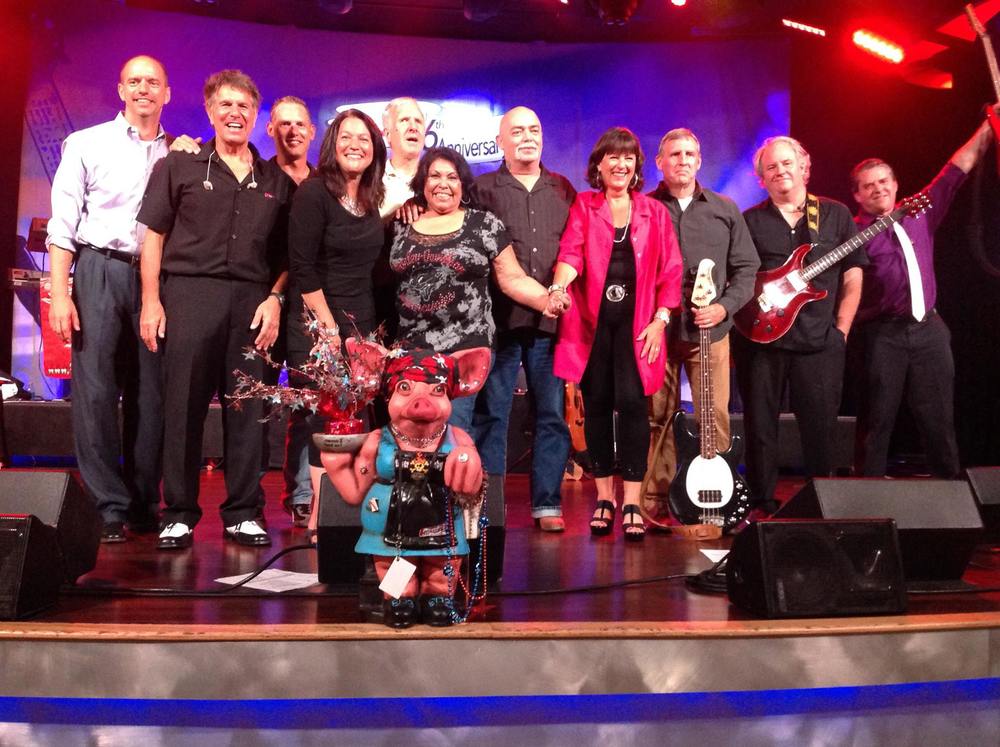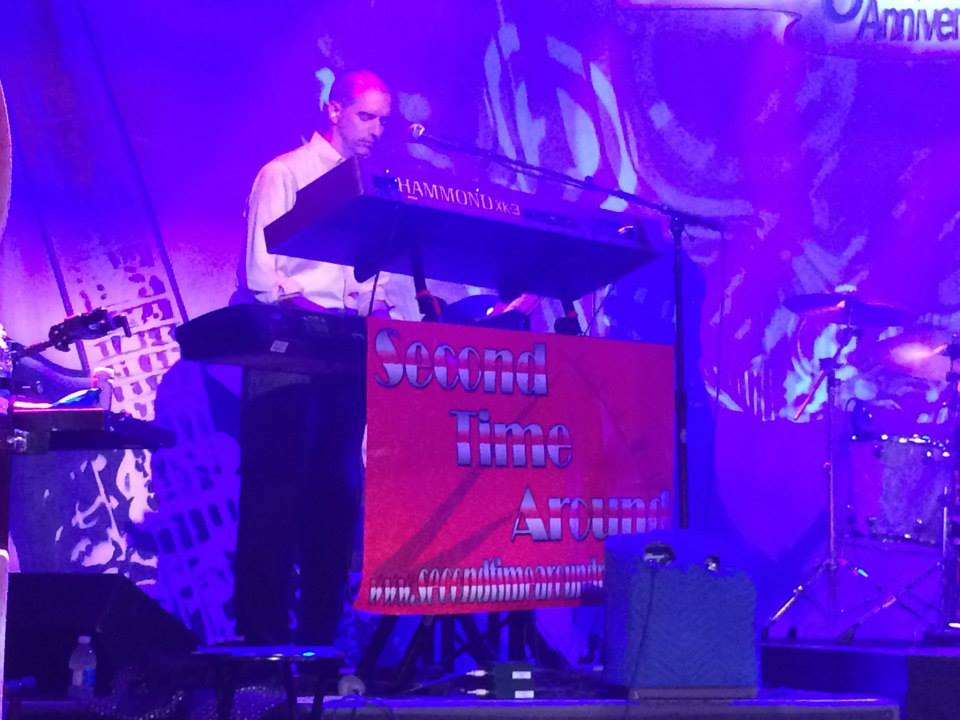Rock Star For a Day

A serendipitous twist propelled my bandmates and me into a realm of temporary rock stardom last week while at the same time a good-natured musician named Izzy was relegated to the role of story-teller.
Many months ago, Izzy gave Paula Lorenzo-Tackett, director of Cache Creek Casino Resort in Brooks, California a business card for his band, 2nd Time Around. There are countless bands called 2nd Time Around, or in my band’s case, “Second Time Around,” and lo and behold, after searching on-line for a while, Ms. Lorenzo-Tackett happened upon the website of a band from Barringon, Illinois, liked the promotional video, and decided to ask them to perform at the sixth anniversary celebration of her restaurant, the Road Trip Bar and Grill of Capay, California.
My bandmates and I didn’t quite understand the request. We are a very good classic-rock band, to be sure, but performing around the Chicago area these past several years has taught us nothing if not a healthy dose of humility. There are many, many good bands out there, and we know that our performances can always be improved, our transitions and endings made tighter, our stage-presence refined, and we know that there are countless amazing performers within the California border. So it was with a degree of skepticism that we accepted the invitation to fly out to the West Coast, all the while wondering if it was too good to be true.
It wasn’t. For two days we were treated like royalty, as Ms. Lorenzo-Tackett flew with us on a chartered jet to Sacramento, accompanied us on a stretch limo to her restaurant and casino, and then treated us to a state-of-the-art stage, lights and sound system, not to mention a wonderful stay at the beautiful Cache Creek Casino Resort. The Entertainment Technical Manager at the casino, James Taylor, told me stories about his time working with Amy Grant and Blackfoot, and how when he got the call to work at Cache Creek he couldn’t turn it down because it was evident that the ownership believed in doing things the right way. Strolling along the runways on the theater’s perimeter, I glanced at the photos of other performers who have graced the stage at Cache Creek – Ringo Star, Melissa Etheridge, Jay Leno, Smokey Robinson, etc. – and it was clear that doing things the right way had led to some wonderful performances. And here we were, a cover band from Chicago, getting to play in front of 475 people in a spectacularly-decorated room with several audio and video experts working diligently to coax as good a performance out of us as possible.
For three sets, we performed our hearts out, hoping we would do right by the folks at Cache Creek, and ultimately, we think we did. We had a blast, the crowd danced and yelled for more, and Paula and her husband Jerry gave us high praise. Whether or not we were deserving of it, we didn’t know. We just knew we had given it our all.
 The leaders of Second Time Around, Johnny and Angie Fridono, are believers in karma. Treat people right, and you’ll be treated right. I’ve only been in the band for the past year, so I feel like I got to ride the coattails of decades of Johnny and Angie treating people right. Who knew when I responded to a “keyboardist wanted” ad last year that it would lead to such an incredible journey?
The leaders of Second Time Around, Johnny and Angie Fridono, are believers in karma. Treat people right, and you’ll be treated right. I’ve only been in the band for the past year, so I feel like I got to ride the coattails of decades of Johnny and Angie treating people right. Who knew when I responded to a “keyboardist wanted” ad last year that it would lead to such an incredible journey?
At the show’s end, there was Izzy, clapping his hands in front of the stage. I introduced myself, and he said, “I’m in a band called 2nd Time Around too, and I’m the reason you’re here!” He told me the story, and I wondered if he was going to be bitter about seeing a different band perform where his band had hoped to play. But Izzy said graciously, “You guys are TEN TIMES better than we are.” Izzy seems like another guy who treats people right, and I hope that karma catches up to him sometime and offers him the gig of a lifetime.
